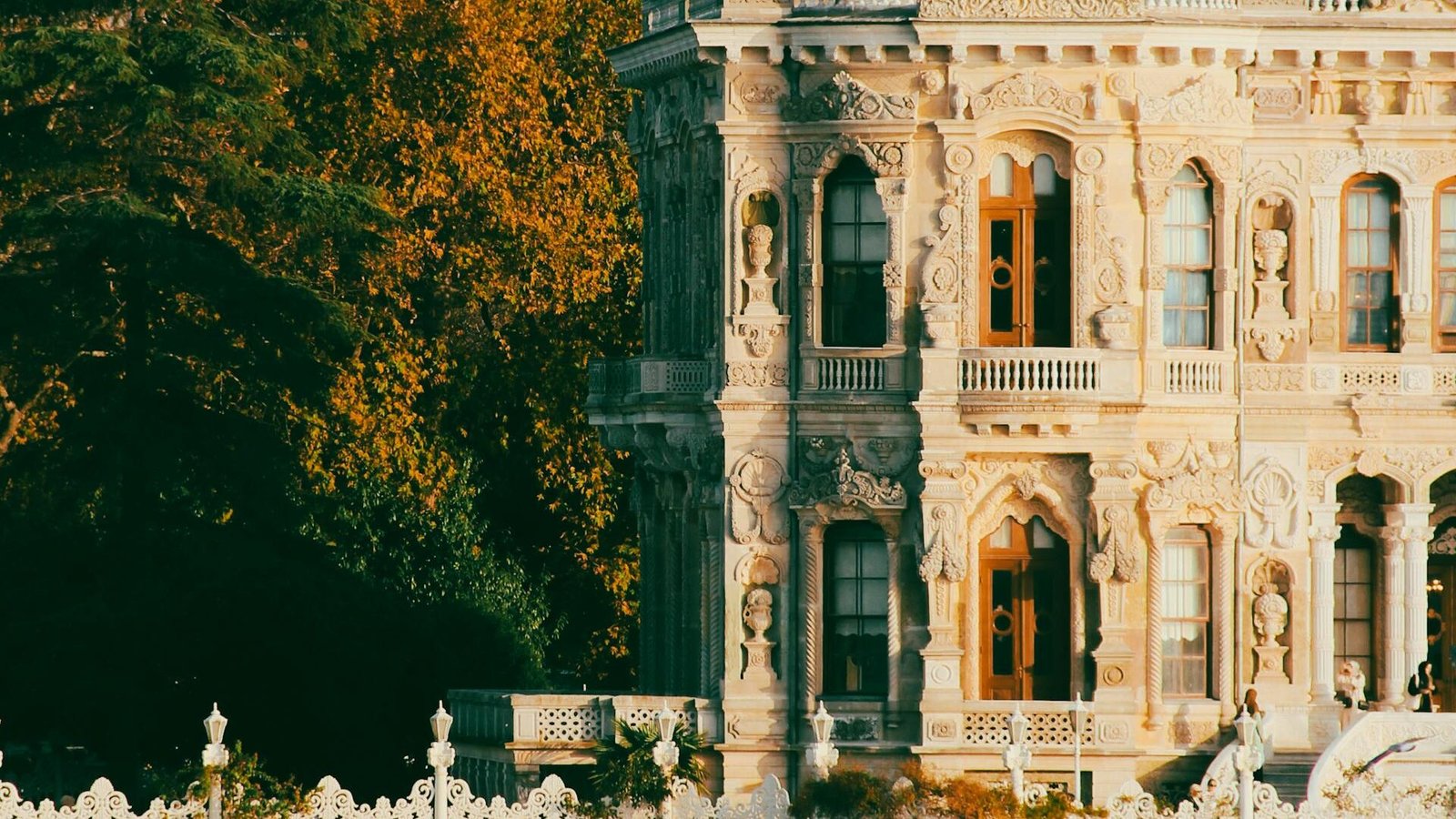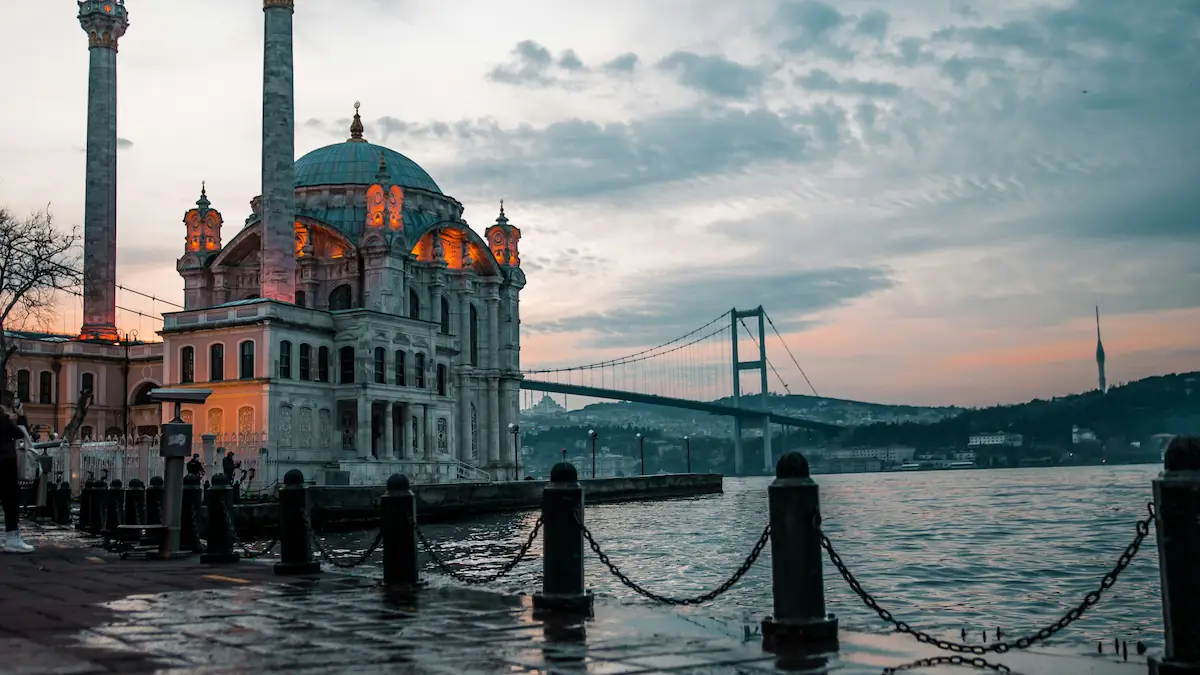Hagia Irene stands as one of Istanbul’s most remarkable yet overlooked Byzantine treasures. While millions flock to its famous neighbor, the Hagia Sophia, this ancient church remains a peaceful sanctuary that offers visitors an authentic glimpse into Constantinople’s Christian past. Built in the 6th century and never converted to a mosque, Hagia Irene preserves its original Byzantine character like no other monument in the city.
This comprehensive guide will help you discover everything you need to know about visiting Hagia Irene, from its fascinating history to practical travel information, including entrance fees, opening hours, and what to expect during your visit.
Visiting Hagia Irene: Practical Information
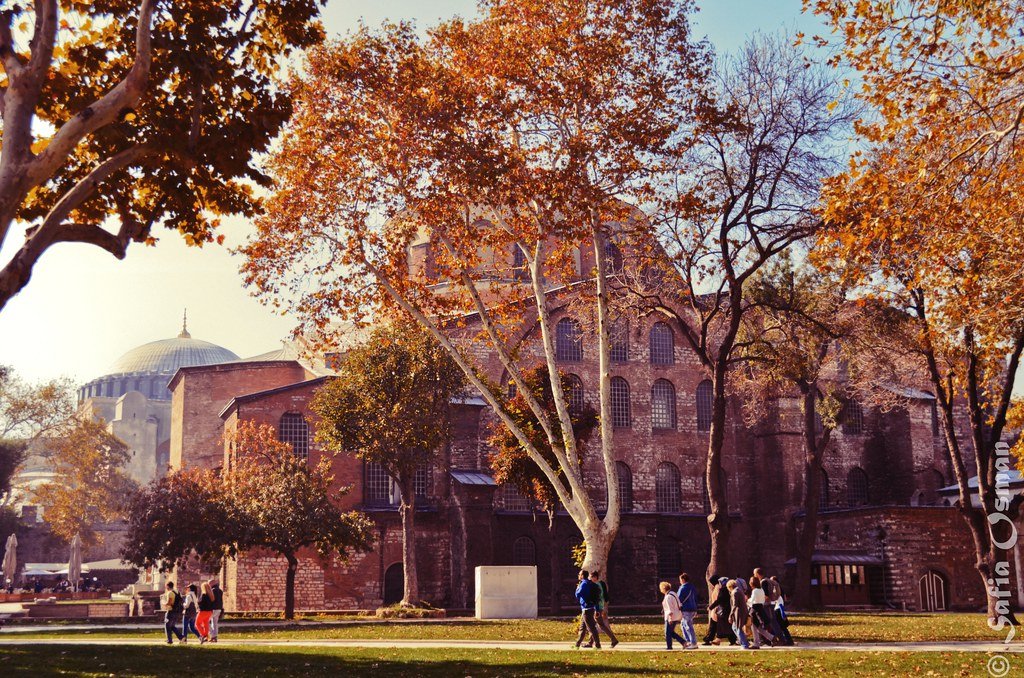
Planning your visit to Hagia Irene requires understanding the practical details that will help you make the most of your experience.
Hagia Irene Location
Hagia Irene is located within the outer courtyard of Topkapi Palace in Istanbul’s Sultanahmet district. The exact address is Cankurtaran, 34122 Fatih/Istanbul. The church sits in the first courtyard of the palace complex, making it easily accessible to visitors.
Hagia Irene Opening Hours
The opening hours for Hagia Irene vary depending on the season and special events:
Regular Hours:
- Tuesday through Sunday: 9:00 AM to 5:00 PM
- Monday: Closed
- Last admission: 4:30 PM
Special Considerations:
- Hours may be extended during summer months
- Concert and special event schedules can affect regular visiting hours
- Religious holidays may impact opening times
Hagia Irene Entrance Fee
The entrance fee structure for Hagia Irene is straightforward:
Standard Admission:
- Adult tickets: 30 Turkish Lira (approximately $1.50 USD)
- Students with valid ID: 15 Turkish Lira
- Children under 12: Free admission
Museum Pass Options:
- Istanbul Museum Pass: Includes Hagia Irene along with other major museums
- Topkapi Palace combined tickets: Available for visitors planning to see both attractions
Getting There
- Tram: Take the T1 line to Sultanahmet station
- Bus: Multiple bus routes serve the Sultanahmet area
- Metro: Connect to tram lines for access to the historic peninsula
Walking Directions:
From Sultanahmet Square, walk toward Topkapi Palace. Enter through the Imperial Gate and continue to the first courtyard where you’ll find Hagia Irene on your right.
What to Expect During Your Visit
A typical visit to Hagia Irene lasts 45 minutes to 1 hour. The experience includes:
- Self-guided exploration of the main nave and apse
- Viewing of the iconoclastic cross mosaic
- Appreciation of the architectural details and acoustic properties
- Photography opportunities (flash photography may be restricted)
Highlights Near Hagia Irene
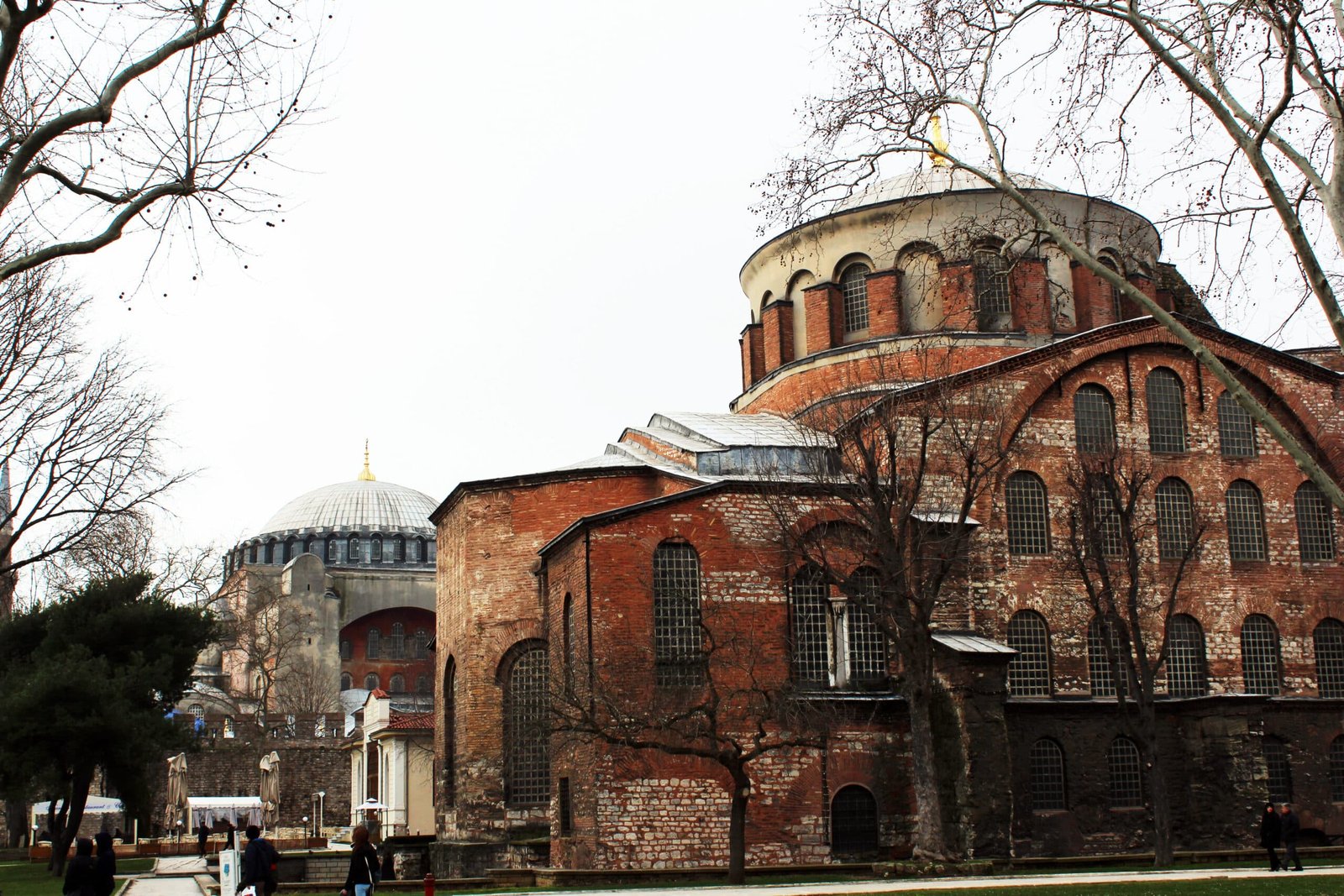
The location of Hagia Irene within Istanbul’s historic Sultanahmet district provides easy access to numerous other attractions, making it perfect for a full day of sightseeing.
Topkapi Palace
- Includes Hagia Irene within its complex.
- Served as the residence of Ottoman sultans for over 400 years.
- Features collections of Islamic art, weapons, and royal artifacts.
- Plan 2-3 hours to explore courtyards and museums.
Hagia Sophia
- A short walk from Hagia Irene.
- An architectural marvel that served as both a church and mosque.
- Offers a contrast to Hagia Irene and showcases Byzantine architecture.
Blue Mosque (Sultan Ahmed Mosque)
- Located across from Hagia Sophia.
- A masterpiece of Ottoman mosque architecture with six minarets and cascading domes.
- Active for worship; visitors should respect prayer times and dress codes.
Basilica Cistern
- An underground structure beneath Sultanahmet.
- Features a forest of columns and offers a cool escape from the heat.
Istanbul Archaeological Museums
- Close to Hagia Irene.
- Houses one of the world’s most significant collections of classical antiquities.
- Includes artifacts from across the Ottoman Empire, providing historical context.
Suggested Itinerary
Morning (9:00 AM – 12:00 PM):
- Start with Hagia Irene when it opens to avoid crowds
- Continue to Topkapi Palace for 2-3 hours of exploration
Afternoon (12:00 PM – 5:00 PM):
- Lunch break in Sultanahmet area
- Visit Hagia Sophia and Blue Mosque
- End with the Basilica Cistern
Evening:
- Explore the nearby Grand Bazaar or enjoy dinner with views of the Bosphorus
Understanding the Hagia Irene Experience
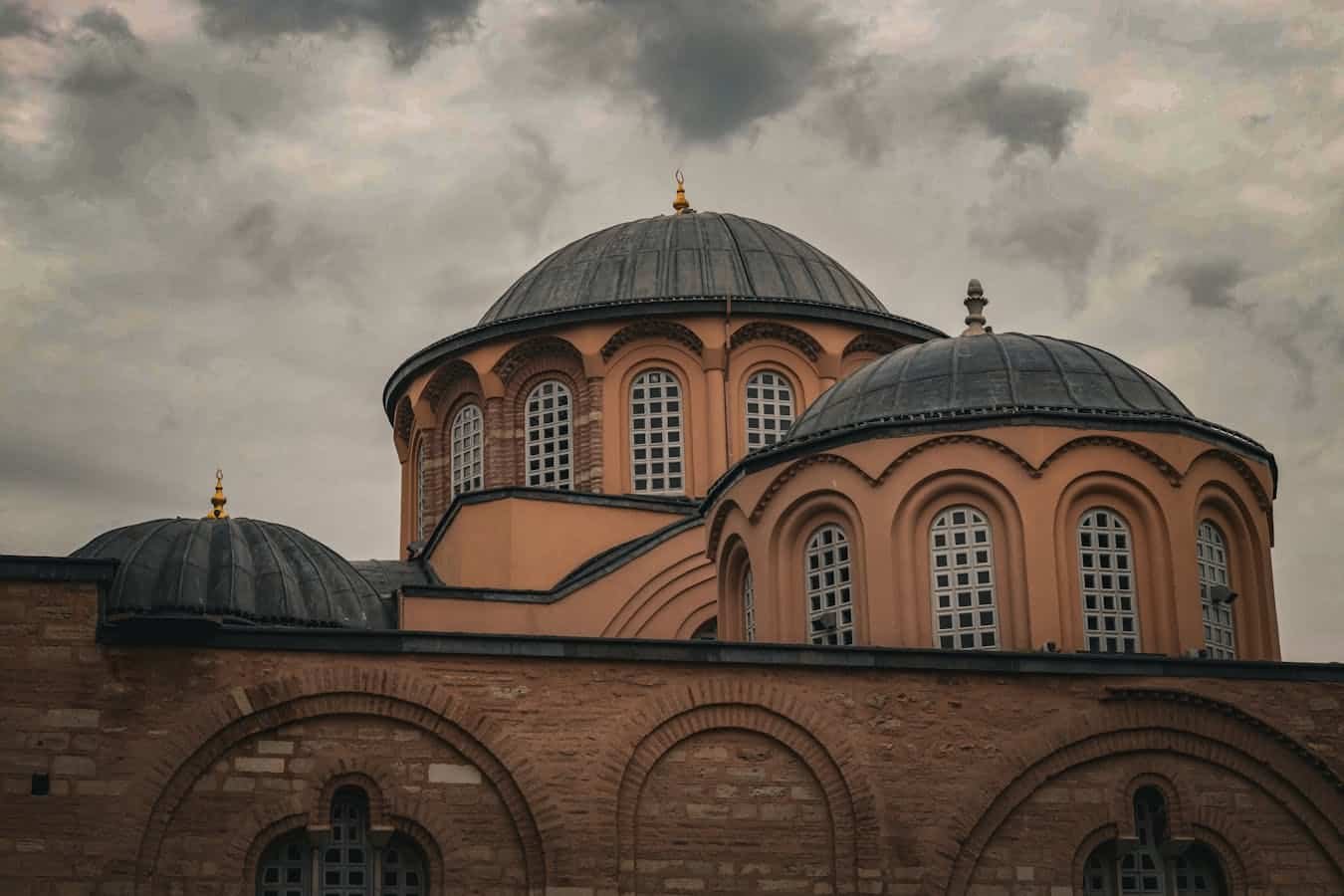
The Hagia Irene meaning extends beyond its translation as “Holy Peace.” For visitors, it represents a unique opportunity to experience Byzantine architecture in its most authentic form. Unlike other major attractions in Istanbul such as the Hagia Sophia, Topkapi Palace, or the Blue Mosque, Hagia Irene maintains an atmosphere of quiet contemplation that allows visitors to truly connect with its historical significance.
The church’s survival through various empires and its continued use as a cultural venue demonstrate Istanbul’s ability to preserve its diverse heritage. When you stand beneath its dome and observe the simple cross mosaic, you’re experiencing the same spiritual space that welcomed emperors, patriarchs, and ordinary citizens throughout more than a millennium of history.
Making the Most of Your Visit

To fully appreciate Hagia Irene, consider these tips for your visit:
Best Times to Visit:
- Early morning opening for fewer crowds
- Late afternoon for golden light streaming through windows
- Check for concert schedules if you’re interested in experiencing the acoustics
Photography Tips:
- The natural lighting creates dramatic shadows and highlights
- Focus on architectural details like capitals and mosaics
- Respect any photography restrictions, especially regarding flash use
Cultural Considerations:
- Dress modestly as a sign of respect for the religious heritage
- Speak quietly to maintain the contemplative atmosphere
- Consider the historical significance of what you’re experiencing
Your Gateway to Byzantine Istanbul

Hagia Irene offers more than just another stop on your Istanbul itinerary—it provides a genuine connection to the city’s Byzantine past. While the crowds rush between the Hagia Sophia and Blue Mosque, you can discover this peaceful sanctuary that has preserved its original character for over 1,500 years.
Whether you’re fascinated by architecture, drawn to historical significance, or simply seeking a moment of quiet reflection, Hagia Irene delivers an experience that few other monuments can match. Its modest entrance fee and convenient location make it accessible to all visitors, while its profound historical importance ensures that your visit will deepen your understanding of Istanbul’s rich cultural heritage.
Plan your visit to Hagia Irene as part of your Istanbul adventure, and discover why this hidden gem continues to inspire visitors from around the world.
History and Significance of Hagia Irene

The name “Hagia Irene” translates to “Holy Peace” in Greek, reflecting its original purpose as a place of Christian worship. This sacred site holds deep historical significance that spans over 1,500 years.
Early Christian Constantinople
Hagia Irene was one of the first churches built in Constantinople, predating even the famous Hagia Sophia. The original structure was commissioned by Emperor Constantine I in the 4th century, making it one of the oldest surviving churches in Istanbul. The church served as the patriarchal cathedral of Constantinople before the completion of the first Hagia Sophia.
Reconstruction Under Justinian
The current structure dates primarily to the reign of Emperor Justinian I (527-565 CE), who ordered its reconstruction after the original building was destroyed during the Nika Riots in 532 CE. The same emperor who gave us the magnificent Hagia Sophia also ensured that Hagia Irene would stand as a testament to Byzantine architectural mastery.
Survival Through the Ages
What makes Hagia Irene truly unique is its survival through the Ottoman conquest of 1453. Unlike most Byzantine churches that were converted into mosques, Hagia Irene remained largely unchanged. The Ottomans used it as an armory and storage facility, which inadvertently preserved its Christian mosaics and architectural features.
Modern Era and Cultural Significance
During the 19th and 20th centuries, Hagia Irene served various purposes, including housing the Imperial Museum’s collection before the creation of the Istanbul Archaeological Museums. Today, it operates as a museum and concert venue, where its exceptional acoustics make it a favorite location for classical music performances.
Architectural Overview of Hagia Irene
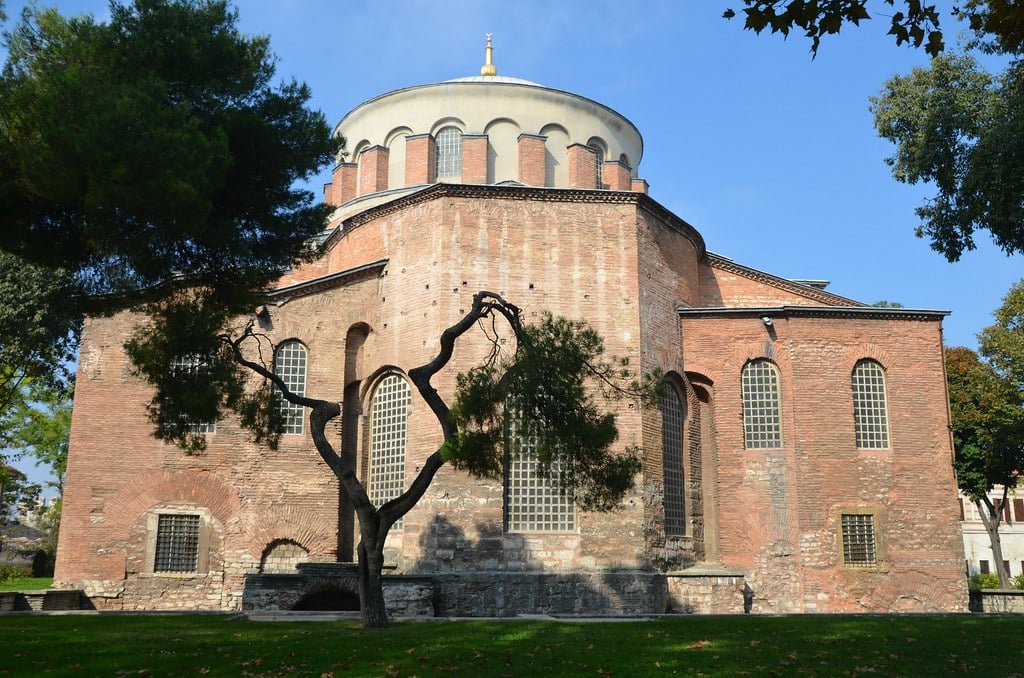
The Hagia Irene architecture represents a masterpiece of early Byzantine design, showcasing innovative engineering techniques that influenced church construction throughout the empire.
Byzantine Architectural Style
Hagia Irene exemplifies the transition from the traditional Roman basilica to the distinctive Byzantine style. The building combines elements of both longitudinal and centralized planning, creating a unique architectural hybrid that predates the revolutionary design of Hagia Sophia.
Unique Structural Features
The church features a distinctive cross-in-square plan topped by a central dome. The dome rests on pendentives—curved triangular segments that elegantly transition from the square base to the circular dome above. This architectural solution was revolutionary for its time and demonstrates the advanced engineering skills of Byzantine architects.
The interior spans approximately 100 meters in length, making it one of the largest surviving Byzantine churches. The nave is divided by massive columns that support the gallery level, creating a sense of vertical grandeur that draws the eye upward toward the dome.
Preserved Mosaics and Decorations
One of the most remarkable features of Hagia Irene is its surviving iconoclastic-period mosaics. The apse features a simple but powerful cross mosaic, created during the 8th century when figurative religious art was forbidden. This mosaic represents one of the few surviving examples of iconoclastic art in Istanbul.
The church also retains its original marble decorations, including ornate capitals and intricate floor patterns that showcase the luxury and craftsmanship of Byzantine artisans.
Acoustic Properties
The Hagia Irene architect designed the space with remarkable acoustic properties. The dome and supporting structures create natural amplification that allows even whispered sounds to carry throughout the building. This acoustic perfection makes it an ideal venue for concerts and explains why it continues to host musical performances today.
FAQs about Hagia Irene
What are the opening hours of Hagia Irene?
Hagia Irene is usually open to visitors from 9:00 AM to 5:00 PM, with the last entry allowed one hour before closing. However, hours may vary on public holidays, so it is recommended to check in advance.
Is there an entrance fee?
Yes, there is a modest entrance fee to visit Hagia Irene. The exact amount is subject to change, so it’s best to confirm the current fee before planning your visit.
How do I get to Hagia Irene?
Hagia Irene is conveniently located in the heart of Istanbul, within the Sultanahmet area, near popular attractions like Hagia Sophia and Topkapi Palace. It is easily accessible by public transport or on foot if you are staying nearby.
Can I take photos inside Hagia Irene?
Photography is generally permitted inside Hagia Irene for personal use; however, the use of flash or tripods may be restricted. Be sure to respect any guidelines in place during your visit.
Is Hagia Irene suitable for children?
Yes, Hagia Irene can be a family-friendly destination. Kids can enjoy exploring the historic architecture, but parents should supervise them closely due to some uneven surfaces and historical preservation rules.
Are guided tours available?
Guided tours are often available and are highly recommended to fully appreciate the rich history and unique features of Hagia Irene. Many tour operators in Istanbul include it as part of their itineraries.
How much time is needed to visit Hagia Irene?
A visit to Hagia Irene typically takes about 30 to 60 minutes, depending on your level of interest in exploring the details of its architecture and history. If you are on a guided tour, the duration may vary slightly.
When was Hagia Irene built?
Hagia Irene was originally constructed during the 4th century, under the reign of Emperor Constantine the Great. It stands as one of the oldest churches in Istanbul and has a history that spans over 1,600 years.
Who built Hagia Irene?
Hagia Irene was initially commissioned by Emperor Constantine the Great. It was later rebuilt and modified after significant damage during riots and earthquakes, but its origins trace back to Constantine’s era.







